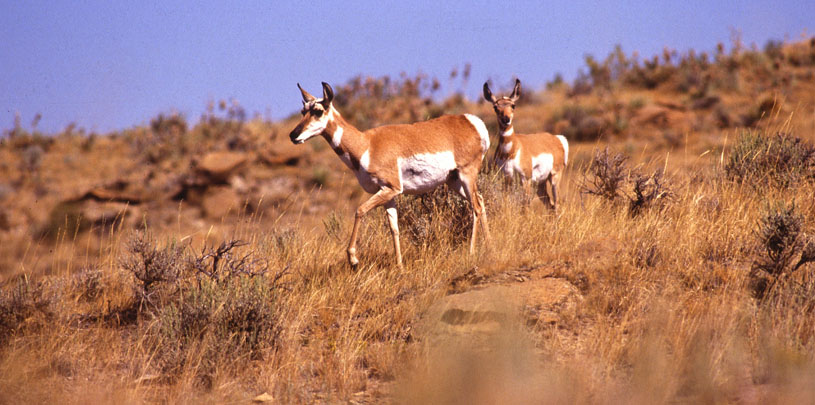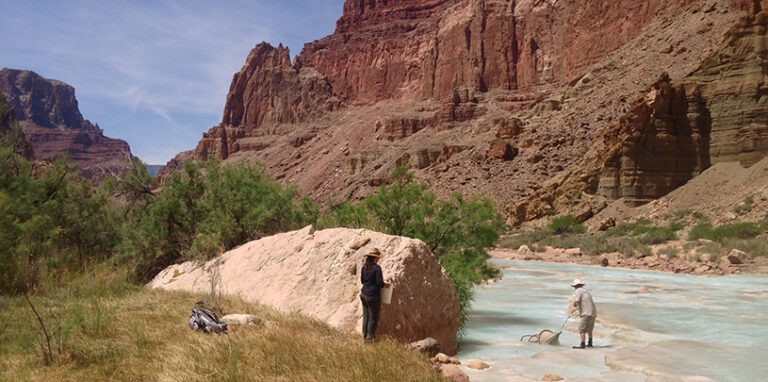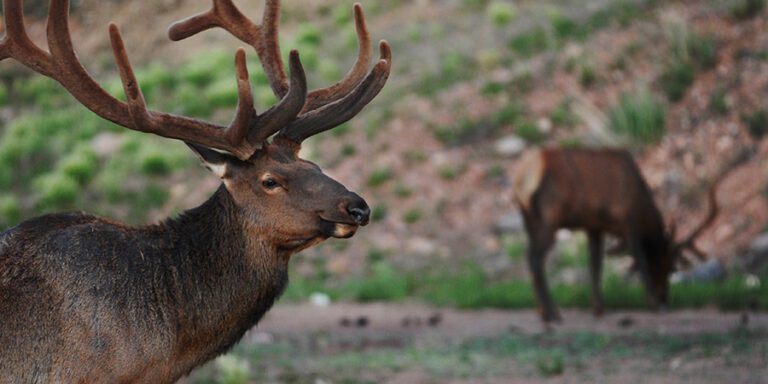
Pronghorn don’t jump, so replacing the bottom strand of barbed wire on a fence with smooth wire can help pronghorn move across the landscape safely.
The pronghorn is the fastest land animal in North America, clocking in at full stride at up to 50 or even 60 miles per hour by some accounts. But, the highways and fences that crisscross the public lands of the American West are stopping these animals in their tracks.

We spent a recent field day scouting pronghorn tracks and checking barbed wire livestock fences for hair, to try to understand how and where pronghorn are trying to cross fences in the desert grasslands of the North Rim Ranches. CERISSA HOGLANDER
Barbed wire fences can hurt pronghorn
Not only do these barriers threaten serious injuries (or worse) for pronghorn, but they can also “fragment” pronghorn habitat by limiting access to the water and forage these animals need to survive.

Wildlife that have more connected habitats typically thrive more than wildlife that have more fragmented habitats. While other large mammals like mule deer can leap over some livestock fences, pronghorn almost always take the cottontail approach and try to crawl underneath these wire strands.
If the bottom wire of a livestock fence is barbed or is too close to the ground, pronghorn are not able to cross under them. They can be cut off from water and food resources, or the open space they need to outrun predators.

Replacing barbed wire with smooth one mile of fence at a time
At the Grand Canyon Trust, we are working to understand how livestock fences are barriers to pronghorn movement on lands north of the Grand Canyon. And, one mile at a time, we’re working to fix them. With the support of partners and volunteers, we are raising up the bottom wires a little farther off the ground and replacing the bottom barbed strands with smooth wire.

While the livestock can’t tell the difference, the hoofprints and scurry marks under these modified fences suggest that the pronghorn notice the change.

Fence work requires removing the bottom strand of barbed wire and replacing it with smooth. CERISSA HOGLANDER
Help make fences safer for pronghorn
Volunteers head out this weekend for the next round of fence work, and we are excited for the results. Please stay tuned for future opportunities to help us with this work! Together, we are reconnecting habitat and helping pronghorn move more freely across the landscape north of the Grand Canyon.




